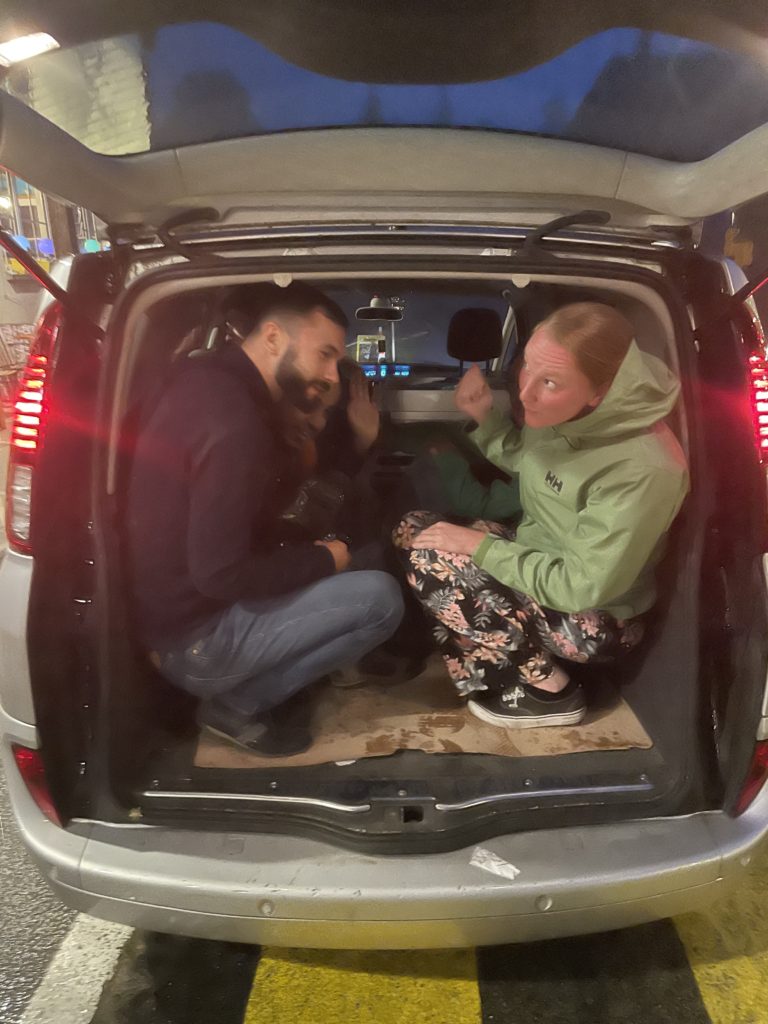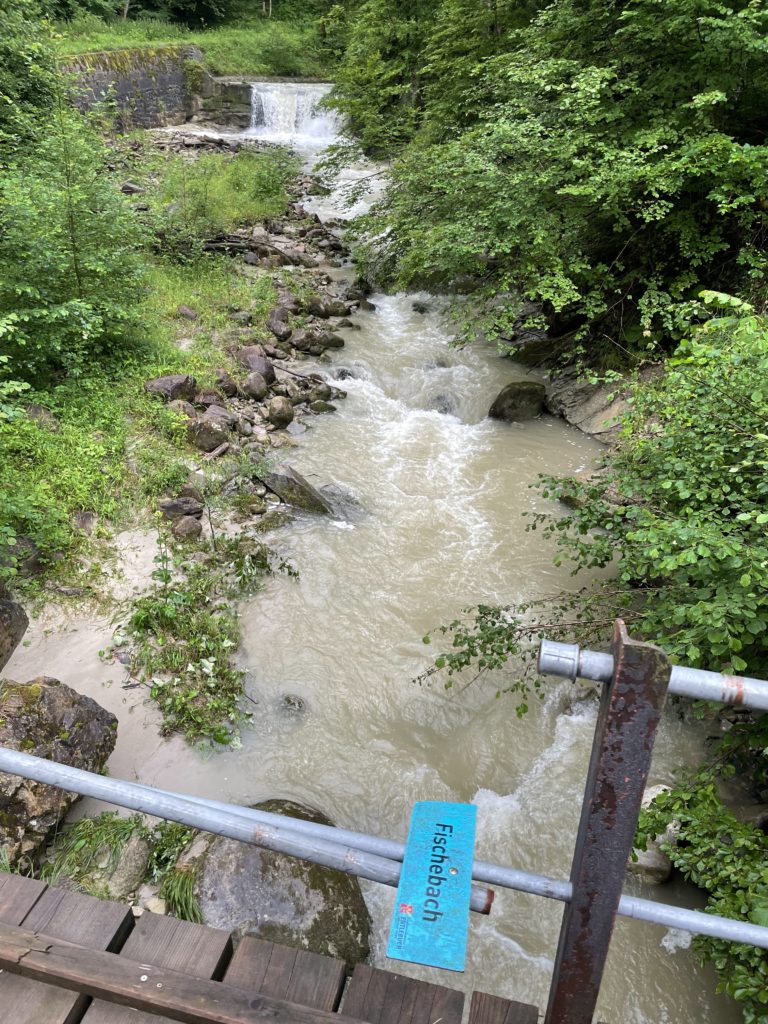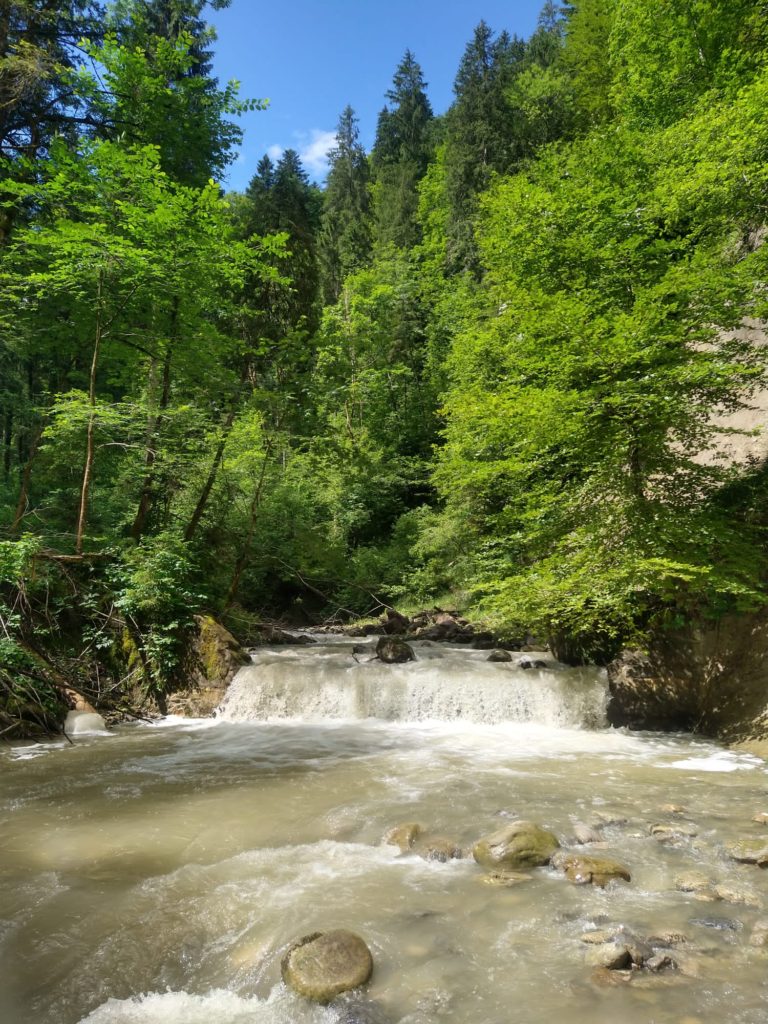Dieke is a master’s student Earth, Structure and Dynamics Masters at Utrecht University, currently working on her graduation thesis in paleomagnetism.
Plate reconstructions are essential tools in tectonic, palaeogeography, -climate, -oceanography, and -biology studies. Apparent polar wander paths (APWPs) provide quantitative information to create these plate reconstructions and their calculation requires that the palaeosecular variation (PSV) of the geomagnetic field is adequately recorded and averaged. This is straightforward for volcanic datasets, which provide spot readings of the paleomagnetic field as lavas cool almost instantaneously on the timescale of PSV. However, sediments are deposited over a period of time and contain artefacts such as a low magnetic signal and magnetic overprints. Opinions on how to reliably use palaeomagnetic data from sediments vary. One approach is the collection of one sample per sedimentary layer, whereby each sample provides a distinct measurement the palaeomagnetic field. Other palaeomagnetists strongly advocate that three, five, or even seven samples per sedimentary layer are required. Importantly, no research has been done to compare the outcome of these different approaches.
In order to find the best paleomagnetic sampling strategy for sediments, I organized a fieldtrip to the North Alpine Foreland Basin in Switzerland in July 2021. After 1.5 years of working from our home offices, everyone was very keen to go on a field trip again. Therefore, I went together with my supervisors Prof. Douwe van Hinsbergen and PhD-candidate Bram Vaes, as well as PhD-candidates Erik van der Wiel and Leny Montheil (University of Montpellier), and post-docs Goran Andjic, Abdul Qayyum, and Lydian Boschman (ETH Zürich). Our goal was to sample a section named the Fischenbach section, located near Luzern, and on the first day we were joined by Prof. Fritz Schlunegger (University of Bern) who sampled this section during his PhD 20 years ago.

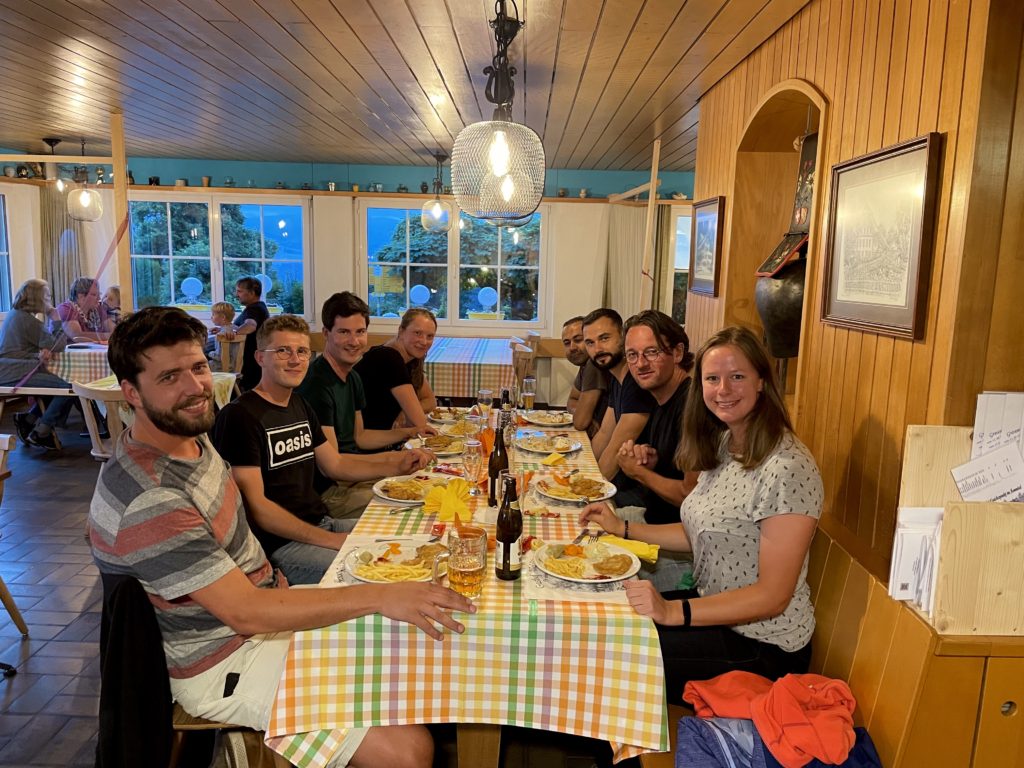
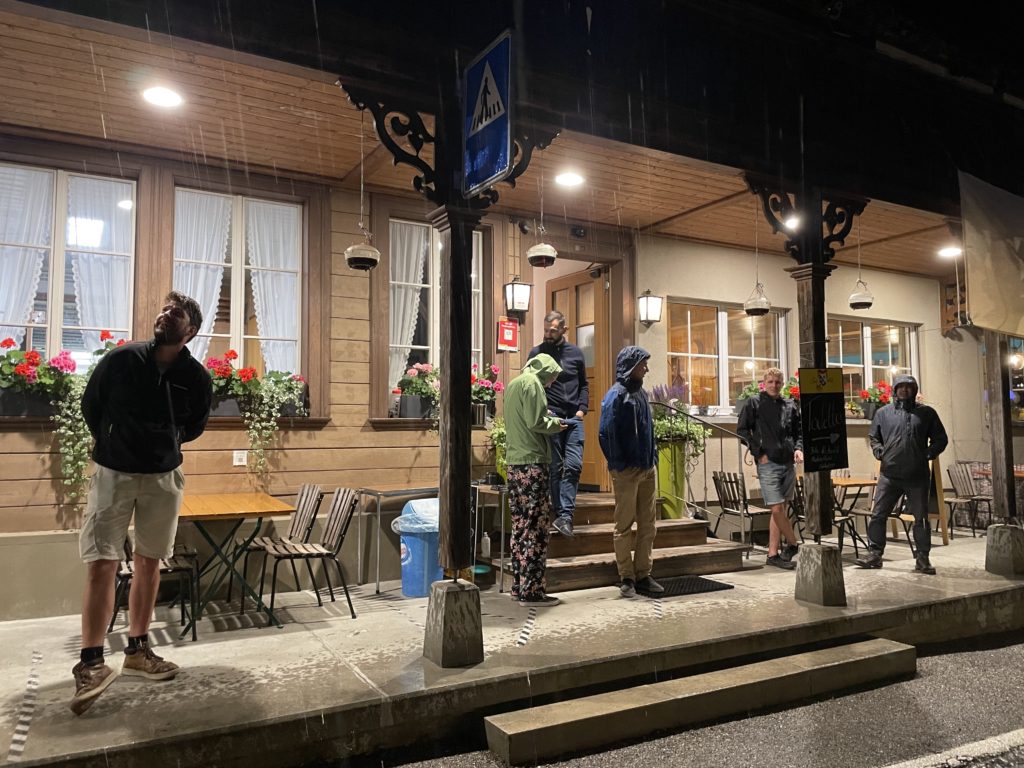
After postponing the fieldwork once, a lot of insecurity due to corona restrictions, bad weather predictions, and everyone testing negative for corona, our departure day had finally arrived! Early Monday morning we met at the Utrecht Science Park, cars packed and ready to go. A long day of driving went by, we almost lost Erik and Abdul at the Swiss border, but in the evening, we arrived in our beautiful chalet in the Emmental valley, with a view on the Alps! We started our trip with a dinner, which was really nice! However, once we wanted to make our way back to the chalet, the heavens opened up and it started raining cats and dogs. The owner of the restaurant was very kind and offered us a ride to our chalet, so off we went with 9 people jammed into her car! What a way to start this trip, could not have imagined better teambuilding!
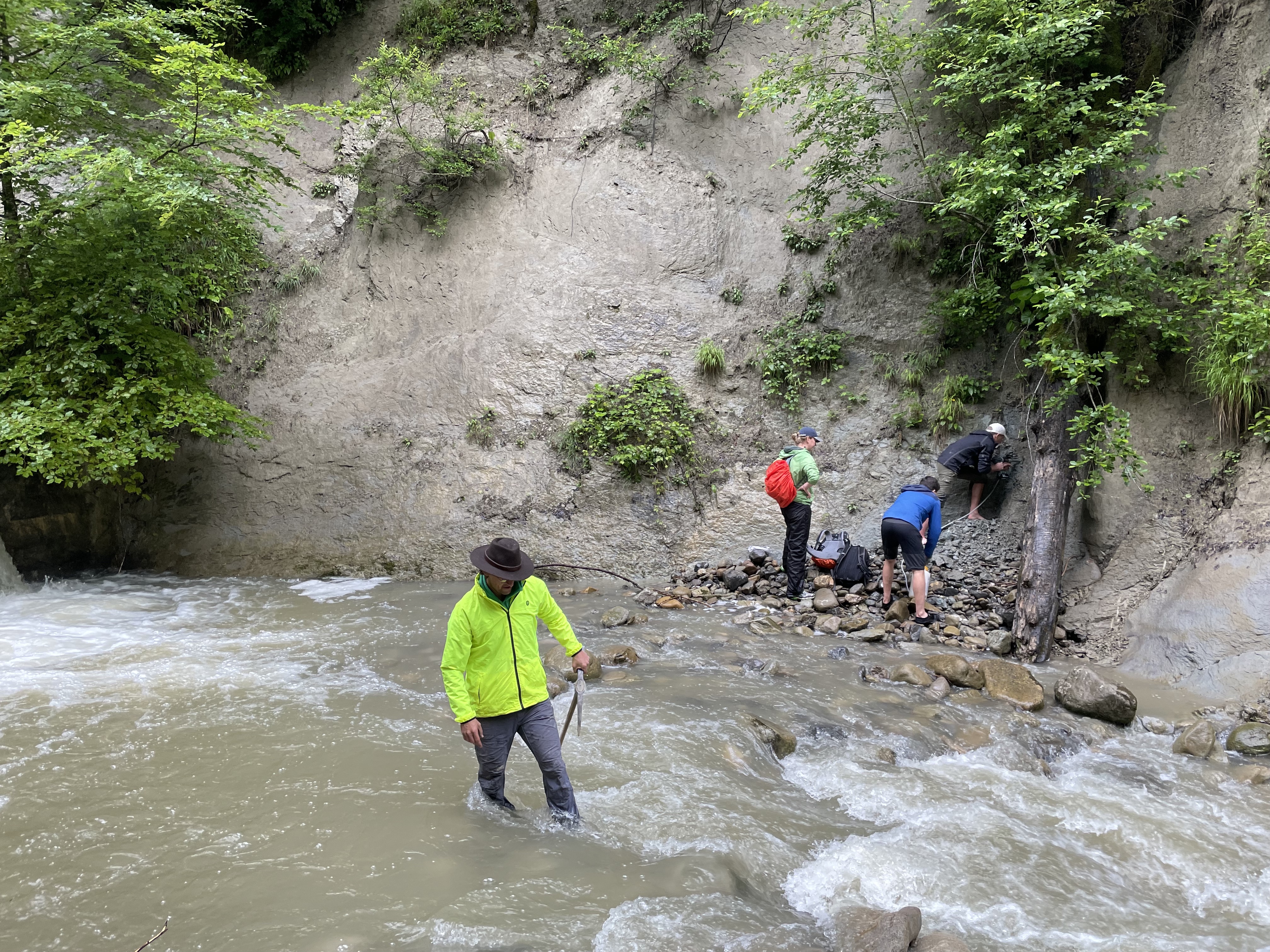
The next morning, after a night with constant rain, the water levels in the river next to our section were still too high to start our sampling campaign. Therefore, we started off slow and met up with Fritz for lunch, after which we finally could go to the section. This first day was all about connecting the section to the log that Fritz had made 20 years ago and taking some first samples. The next day was a full day of sampling, since the weather finally allowed us to, sampling a total of 24 sites – approximately 160 samples. We even had some sun that day!
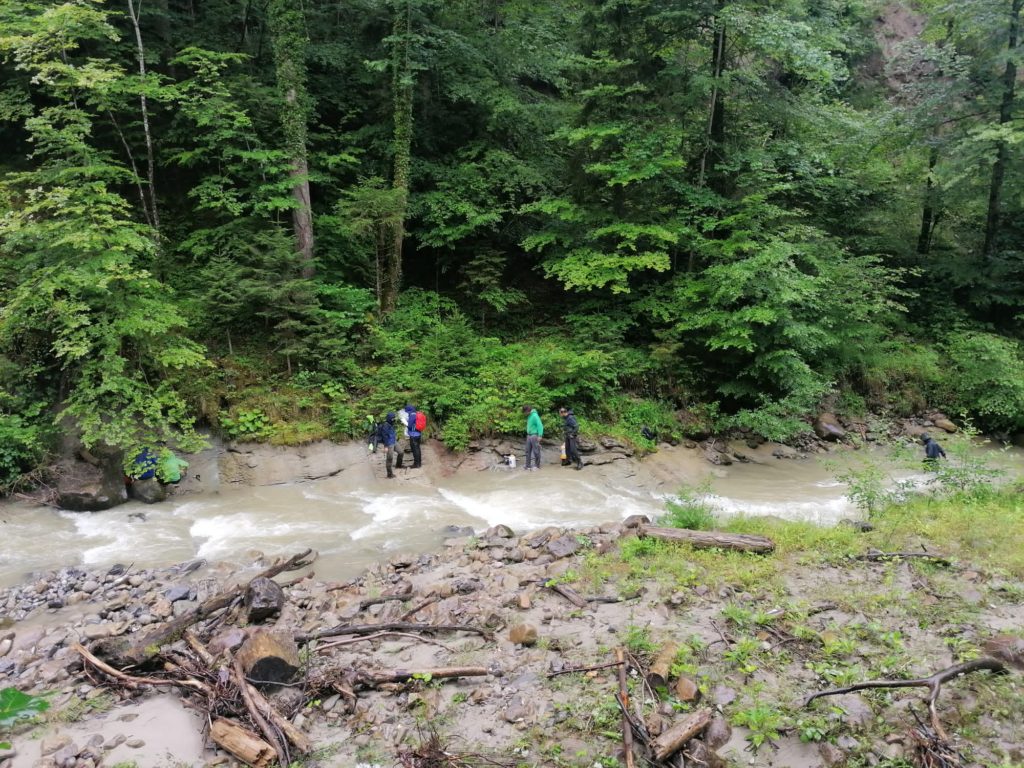
The last day we started a little later due to the high water levels and had to quit sooner because of the pouring rain and water levels rising again, but with another 17 sites sampled that day, we ended up with a total of 45 sites – approximately 300 samples. Very pleased with this result and after a fun week with everyone, we went home happy. Next month, I will start measuring the remnant magnetic signal in the samples at the paleomagnetic lab Fort Hoofddijk. Then hopefully, we will finally be able to reach conclusions on how to reliably use palaeomagnetic data from sediments!
![]() This work is licensed under a Creative Commons Attribution-NonCommercial-ShareAlike 4.0 International License.
This work is licensed under a Creative Commons Attribution-NonCommercial-ShareAlike 4.0 International License.

